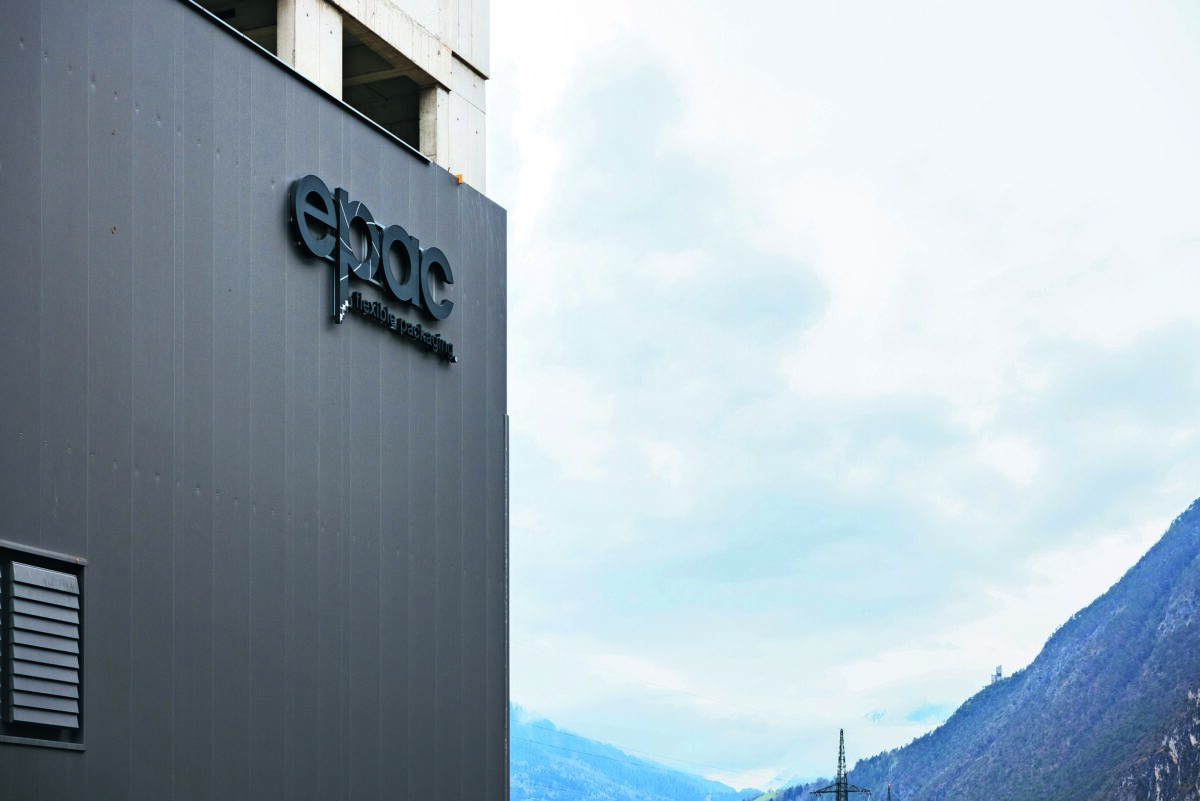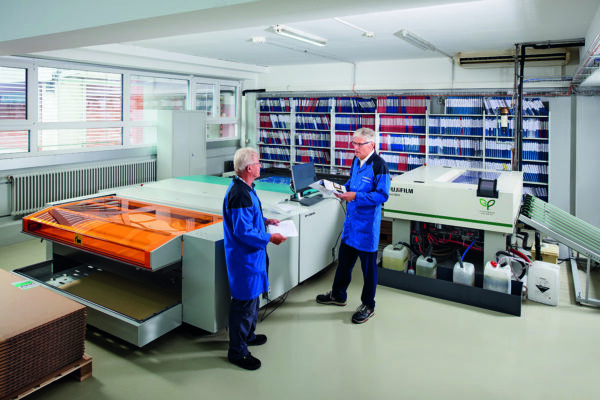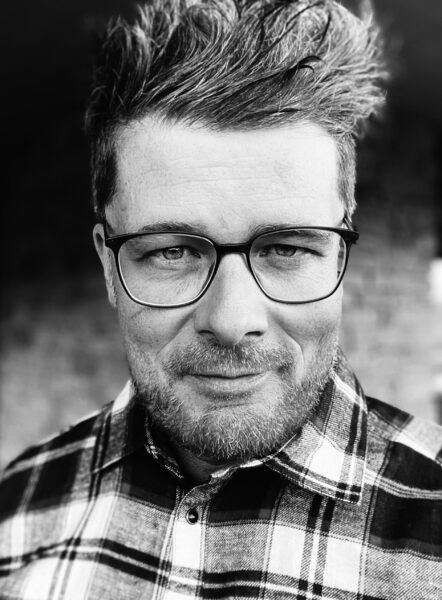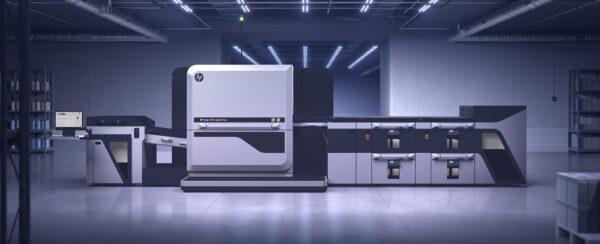ePac from the USA is probably one of the fastest growing flexible packaging printing companies in the world. The company started in 2016 with the idea of printing and producing flexible packaging economically, even for small and medium runs. HP Indigo was the printing partner right from the start. In 2019, the company expanded into Europe and in July of this year, a production site for the DACH region was opened in Zams, Austria. The local site manager is a Swiss national, Christian Bischofberger. swiss print + communication visited the site and found out about ePac's fascinating business model.
First the facts: ePac Flexible Packaging started in 2016 in Madison, Wisconsin, USA. Right from the start, the company used HP Indigo printing technology. ePac now has 26 production sites on five continents and currently uses 60 HP Indigo systems at its sites, with 50 more on order. One of these sites is in Zams. There is no doubt that this is an almost unbelievable growth story. ePac, a kind of global "flyer alarm" for flexible packaging printers? Christian Bischofberger, the manager in Zams, says no: "No, you can't say that. Our core business is printed, high-quality flexible packaging for small and medium-sized batches, adapted to a wide range of individual requirements. Although the Internet plays an important role in marketing, we work like a 'classic' print provider when it comes to direct customer contact. Customers do not order online products from us via predetermined masks, but in most cases they first request specific advice. Flat bags, stand-up pouches, rolls, films, lidding films, with child-proof closures if required. At the same time, we focus on sustainability throughout the company. The materials we use are specifically selected with recyclability, the highest health standards and safe disposal in mind. The bags manufactured by the ePac companies are produced for many industries and their specific applications: Bakery, confectionery, cheese, coffee, tea, frozen foods, health and beauty, lawn and garden, organic, snacks, nutritional supplements, dried meat, pet food, food packaging, medical products."
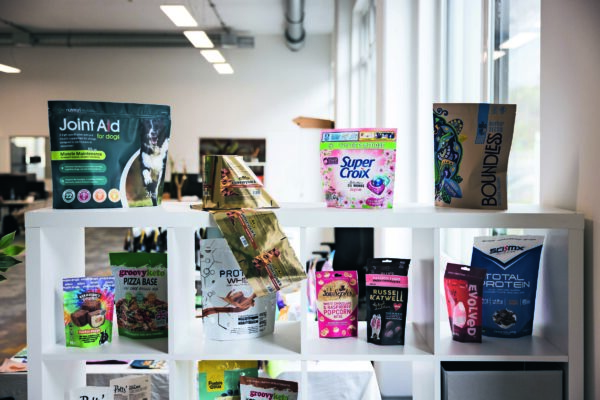
The three
The story of ePac began as beautiful stories always do: with visions that were supposed to provide better answers to existing problems. Three gentlemen, namely Carl Joachim, Jack Knott and Virag Patel, all people with management experience in the packaging printing industry, were concerned about current trends in the flexible packaging industry: the development towards ever more efficient analog production lines and ever lower unit costs meant in practice that flexible packaging in large print runs was becoming cheaper and cheaper, but at the same time minimum order quantities were increasing and the relatively long processing times for orders remained at six to eight weeks. At the same time, however, the perceived need of many new start-up companies for flexible packaging tailored to their needs in small and medium quantities and shorter processing times of 10 to 15 working days increased. However, it was not certain how great the need for such orders actually was. In 2014, the company therefore teamed up with the Graphic Institute at California Polytechnic State University and conducted an intensive market focus group and market research project. The result of this study was that the potential demand in the market for such solutions is huge.
At the same time, HP-Indigo was in the beta test phase with its then brand new HP-Indigo 20000. The three innovators took a very close look at such a machine at a packaging printing company. With their vision, Carl Joachim, Jack Knott and Virag Patel knocked down open doors at the highest level at HP-Indigo, and the system provider was keen to be involved in this story as a strategic partner. Christian Bischofberger, who is currently ramping up the ePac site in Zams: "Without the solutions from HP-Indigo, the vision of the founders of ePac could never have been realized, and even today, in 2023, I know of no alternative to these systems." ePac was founded in 2015, and the first location was opened in Madison, USA, in April 2016. After a certain start-up period, demand increased dramatically. And by the turn of the year, the existing site had to be expanded and a second production and sales branch was opened in Boulder, Colorado, at the same time. It was the starting signal for feverish growth. The expansion now took place throughout the USA and Canada, and in 2019 the first European location was opened in Silverstone, UK. In addition to North America and Europe, the company now also operates in Asia and Africa. The most recent production and sales branch was opened in Ghana. The company currently operates 26 sites, uses 60 HP Indigo systems of various models and has ordered a further 50 25K systems, which will be used for further expansion and will also replace older models. There are already plans for 36 locations worldwide.
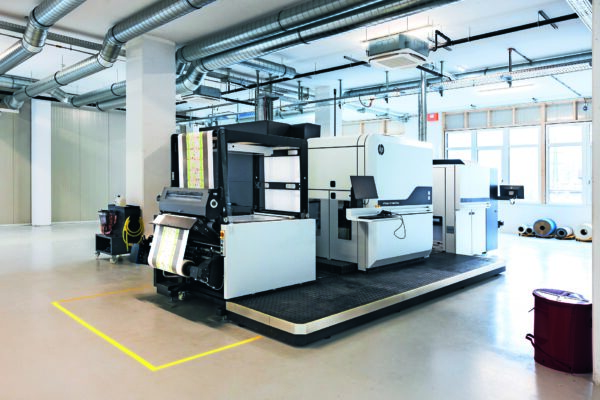
The same pattern
The person responsible in Zams is the Swiss Christian Bischofberger. The trained printer worked for a long time in the Gallus technical department and lived in Appenzell. His story is also remarkable. He found his new partner in the Tyrol and when they started to think about how to continue their long-distance relationship, he was asked whether he could imagine setting up a new ePac site from which Germany, Austria and Switzerland could be supplied. Geographically, a location near the border triangle around Lake Constance was the first option. The other requirements were clear: a building with one level and 2000 m2 of space as well as the necessary technical infrastructure. Finding something exactly like this in the region was anything but easy, but then Christian Bischofberger found the new logistics building of a large food wholesaler for hotels and restaurants in Zams, a location with excellent transport links.
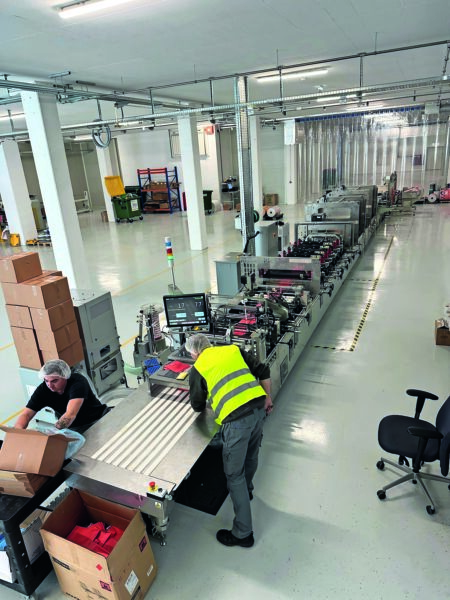
When asked why a "technician" and not a "salesperson" was chosen to set up the Zams site, Christian Bischofberger replies: "Because that is ePac's strategy. We are looking for site managers who know how to successfully set up and efficiently manage an industrial digital printing site. All sites are set up according to the same pattern: You start with the installation of an HP Indigo and the corresponding finishing equipment for the production of flexible packaging. The appropriate employees are hired for production, administration, logistics, IT and sales. There are clear guidelines. We started in July this year and are currently a team of 15 people. In the final expansion, we will have 40 to 45 people." And can you find the right skilled workers for production in Tyrol? Christian Bischofberger: "To be honest: no. It's almost impossible to find specialists with graphic design training in the Tyrol. That's why practically everyone in our production team is a career changer. What's more, I require at least those who work on the HP-Indigo to be able to speak English well." Why is that? "We are in close contact with our European headquarters in Silverstone in the UK and our American headquarters. The big advantage is that all ePac sites have the same technical equipment. Every problem or malfunction that occurs on our Indigo, which is still the only one at the moment, has already occurred somewhere in the ePac production network and has been solved. Although we have a dedicated HP Indigo technical team for ePac, we are often much faster and more flexible with our internal know-how network and can therefore solve many technical problems ourselves."
Market issues
ePac's business model is relatively simple to explain: the quantitative majority of customers are companies that require small and medium-sized quantities of flexible packaging printed specifically for them. In terms of quantity, these are orders of between 2000 and 10,000 packages. It is a printing service that was previously unheard of on the market. Christian Bischofberger: "Until now, many of our customers have bought unprinted neutral bags and then provided them with printed labels with their own company logo. Custom-printed bags were not affordable in the small quantities required. Now they can have individually printed bags produced that fit their budget!". The concept seems logical, but how do you get these "mass customers"? Christian Bischofberger: "Google is an important sales channel. ePac makes no secret of the fact that it invests a lot of money in global marketing and advertising via Google. However, as I have already mentioned, we are not an online print shop. That's why we rely on 'classic' sales, which is also a very important sales channel. Customers place their orders with us in personal contact via e-mail or telephone. This is because the individual requirements for the right packaging solution must be considered on a case-by-case basis, especially in the food sector. This sets us apart from Pixar Print, for example, which focuses on standard solutions with a limited online offering. An important element of the ePac Group's success was and is word-of-mouth advertising. Many customers come to us because they have heard about our services from another provider operating in the same market segment. However, we are increasingly working with larger companies that come to us with specific short runs because their traditional printing partner for the mass production of flexible packaging is not able to handle such orders. Another very important advantage is our global corporate structure, which allows us to realize larger print runs. We often produce large orders for half a million or more bags at various locations. We call this service ePac One. In this context, it is good to know that one of the world's leading packaging printing groups, the Amcor Group, joined ePac as a strategic investor in 2021."
The question remains as to how ePac Zams operates in Switzerland. The Austrian low-cost print shop that is specifically trying to steal a march on the Swiss? Christian Bischofberger takes a differentiated view: "ePac's business concept is primarily aimed at potential customers who have not yet found a suitable solution in the packaging market. Our aim is not to steal a march on existing packaging printers. When evaluating the location, we also looked at the general conditions in Switzerland. As we pursue the philosophy that our pouch is sold at exactly the same price everywhere in the European market, the cost structure in Switzerland is simply too high for this pricing model. Conversely, this also means that if we were to charge a slightly higher price for products that are delivered to Switzerland, a production site in Switzerland would also make good business sense."
The future
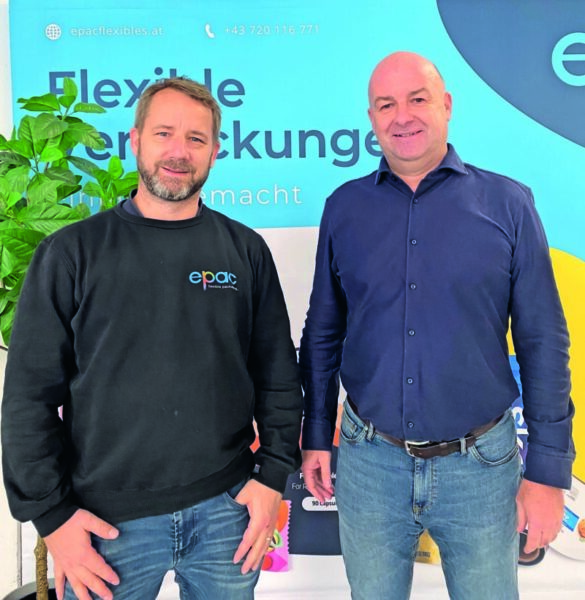
Adrian Meyer is responsible for the entire printing sector at the CHROMOS Group. This includes digital printing. And the CHROMOS Group is the exclusive distributor of HP Indigo products in Switzerland and Austria. In the case of ePac, the situation is of course different. As the world's most important single customer for HP Indigo, support is provided directly. But of course an industry professional like Christian Bischofberger maintains good contacts with the HP-Indigo representative in Austria. ePac is a fascinating example for Adrian Meyer of what is possible with digital printing. This also applies to flexible packaging, where flexographic printing and packaging gravure printing still dominate. Just 2 percent of the total print volume in this segment is produced digitally. However, similar to label printing in the noughties, HP-Indigo is acting as a "disruptor". The HP-Indigo 20000 was launched in 2012, and ePack started with such a system in 2016. In the meantime, the HP-Indigo 25K, first shown to the trade public in 2020, has become the "showpiece" for flexible packaging. Such systems are also already in use in Switzerland. For example, at O. Kleiner AG, a company from Wohlen that is known for its product innovations in flexible packaging. When asked whether an ePac represents a challenge for Swiss suppliers in this market segment, Adrian Meyer replies: "I don't think so. Those who are successful in flexible packaging with digital printing have long recognized the potential of this technology. An ePac does not take customers away from these companies, but rather generates numerous new customers who previously did not have flexible packaging produced themselves because it was too expensive for them. I see the risk more for providers in the market who are still purely analog and therefore do not offer a solution for increasingly complex market requirements." Christian Bischofberger concludes: "Before ePac, digital printing accounted for 1% of the global production volume of flexible packaging; thanks to ePac's market entry, this has increased to 2%. There is still a lot of potential for both new and established suppliers, provided they understand how to take advantage of the opportunities that digital printing offers.
This article was written by Paul Fischer and was published in December 2023 in the trade journal swiss print+communication
Contact us
Would you like to learn more about HP Indigo's digital packaging solutions? Our experts will be happy to help you. Please contact us.
